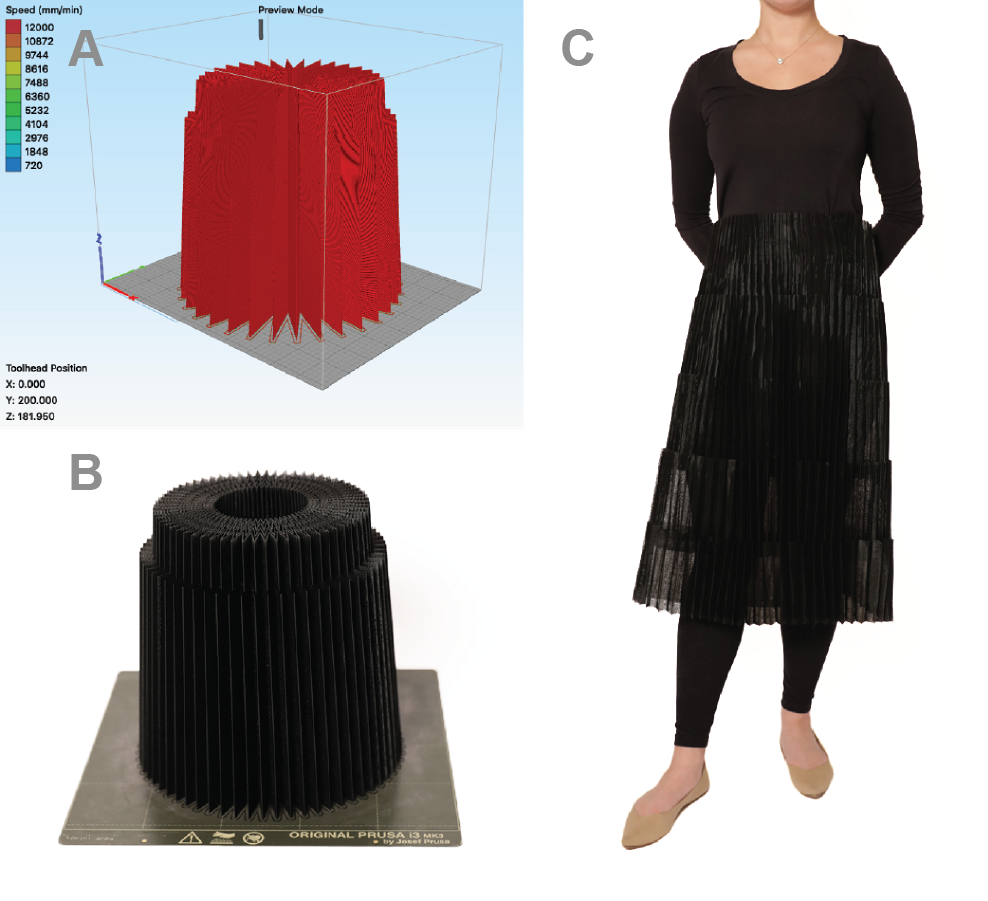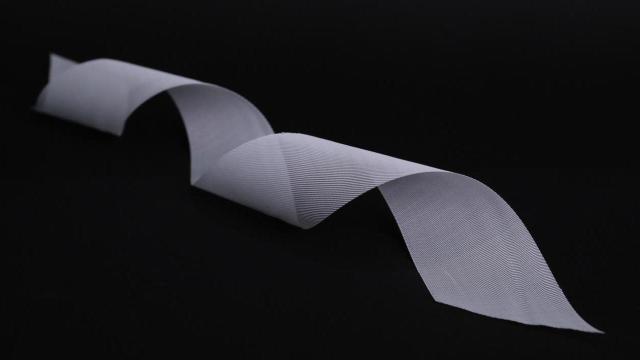3D printers usually work by extruding long strings of molten plastic onto a surface. When MIT Media Lab researchers spotted a broken printer squirting out plastic erratically, they had an idea: By programming a normal home 3D printer, they could simulate that erratic extrusion and create a sort of light, flexible lace out of hot plastic.
Jack Forman, a graduate student at MIT’s Media Lab, turned these defective prints — called DefeXtiles — into a tulle-like “quasi-textile” that can even be used in clothing.
In fact, Forman created a pleated, wearable skirt by printing it in one piece from a standard printer. When pulled open, the skirt is completely wearable and, dare I say, quite fashionable.

The process works by moving a print head over a surface while extruding plastic at regular intervals. Each time the printer extrudes and moves, it creates a thread; repeat that enough times, and you’ve got a sort of fabric. Because the threads are so pliable, they fold much like traditional cloth.
“In general, what excites me most about this work is how immediately useful it can be to many makers,” Forman said. “Unlike previous work, the fact that no custom software or hardware is needed — just a relatively cheap $US250 ($356) printer, the most common type of printer used — really makes this technique accessible to millions of people.”
Forman was also able to print lace by adding flowers and other decorations during the printing process. The real goal, however, is to use these fabrics in health care.
“A particularly exciting future direction is leveraging DefeXtiles to produce low-cost and effective customised surgical meshes that better reinforce organs and tissue after surgery,” said Forman. “3D-printed surgical implants have already been studied with promising results. Additionally, if loaded with antibiotics, such as ciprofloxacin HCl, the degradation would slowly release the antibiotic, preventing infection. Another feature is that the mechanical properties of the mesh could be tuned to match that of the tissue being supported.”
[referenced id=”1522787″ url=”https://gizmodo.com.au/2020/10/physicists-3d-print-a-boat-that-could-sail-down-a-human-hair/” thumb=”https://gizmodo.com.au/wp-content/uploads/2020/10/26/inn8rmum8d3ow6ukr39k-300×169.jpg” title=”Physicists 3D Print a Boat That Could Sail Down a Human Hair” excerpt=”Researchers at Leiden University have 3D printed the smallest boat in the world: a 30-micrometre copy of Benchy the tug boat, a well-known 3D printer test object. This boat is so small, it could float down the interior of a human hair.”]
